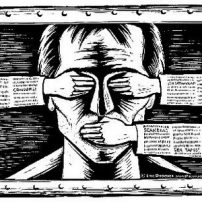
The decision of the Judge not to publish the photo of the accused of murder does not violate the freedom of expression of the media and is compatible with the presumption of innocence
JUDGMENT
Axel Springer SE and RTL Television GmbH v. Germany 21-09-2017 (no. 51405/12)
SUMMARY
Two German media companies have filed a complaint with the ECtHR for a court decision to prohibit the publication of images of the accused in a criminal trial for manslaughter. The magistrate weighed the fact that the alleged perpetrator was never a public figure, and he had explicitly demanded the concealment of his identity. Reasons that, in the judgment of the judge, prevailed over the public’s interest in information. The confession itself does not exclude the person who makes it from the protection of the principle of the presumption of innocence. The Court considered that there had been no violation of Article 10 regarding the freedom of expression.
PROVISION
Article 10
PRINCIPAL FACTS
The applicants are two German media companies: the publishing house Axel Springer SE, registered in Berlin, and the broadcasting company RTL Television GmbH (“RTL”), registered in Cologne.
Both media companies were covering the criminal proceedings against S., a young man who had confessed to the police to having killed his parents and was charged with murder in June 2010. A psychiatric expert opinion obtained by the public prosecutor found that he had been suffering from a schizoid personality disorder at the time of committing the offence. Photojournalists working for the two companies attended the hearings at the Potsdam Regional Court. Prior to the beginning of the first hearing on 11 January 2011 the presiding judge informed journalists that the defendant’s face would have to be made unidentifiable before any images of him were to be published.
According to the companies, the judge also stated that journalists who failed to comply with the order were not to attend any hearings in future proceedings before the Potsdam Regional Court with the aim of taking pictures. The Government contested the applicant companies’ assertions that the presiding judge had threatened to bar journalists from attending hearings in future proceedings.
A few days after the first hearing the presiding judge sent a reasoned order to a number of journalists, including some of those working for the applicant companies. He stated that only journalists who had registered with the court and given assurances that prior to publication of their material S.’s face would be made unidentifiable, for example by blurring it, were permitted to film or take photos. He noted in particular that the personality rights of S., who had never been the subject of public attention and who had expressly requested that his identity be concealed, outweighed the public interest in being informed.
The applicant companies subsequently filed an objection requesting the suspension of the judicial order, pointing out that S. had confessed to the crime on the first day of the proceedings. The presiding judge upheld the order. In February 2012 the Federal Constitutional Court declined to consider a constitutional complaint by the companies (no. 1 BvR 381/11). S. had in the meantime been convicted of murder.
THE DECISION OF THE COURT
The Court found that there had been no violation of Article 10. It considered that the presiding judge had addressed the conflict between the opposing interests and had applied the relevant provisions under national law by carefully weighing the relevant aspects of the case.
Notably, the order had been proportionate to the legitimate aim pursued, namely to protect the personality rights of S. during his trial, in the course of which he was to be presumed innocent until proved guilty, as the order had not been a particularly severe restriction on reporting. Taking images as such had not been limited; the order had only banned the publication of images in which S. could be identified.
Furthermore, there had only been a limited degree of public interest in the criminal case, and information on S.’s physical appearance could not have contributed significantly to the debate on the case. S. was undoubtedly not a public figure. While photos of him had previously been published in some German newspapers prior to the hearing, those pictures had shown him at a much younger age and therefore had not enabled the public to identify him. S. had never sought media attention or made any public comments. Quite to the contrary he had expressly asked to be protected from reporting which made it possible to identify him.
As to the fact that S. had confessed to the crime, both to the police and at the onset of the proceedings, the Court noted that a confession in itself did not remove the protection of the presumption of innocence during a trial. This applied all the more since S. was suffering from a schizoid personality disorder, the criminal court therefore having to review carefully the confession in order to confirm that it was accurate and reliable. Finally, it had to be taken into consideration that the publication of images in which a defendant could be identified might have negative implications on a later social rehabilitation, if convicted(echrcaselaw.com editing).


